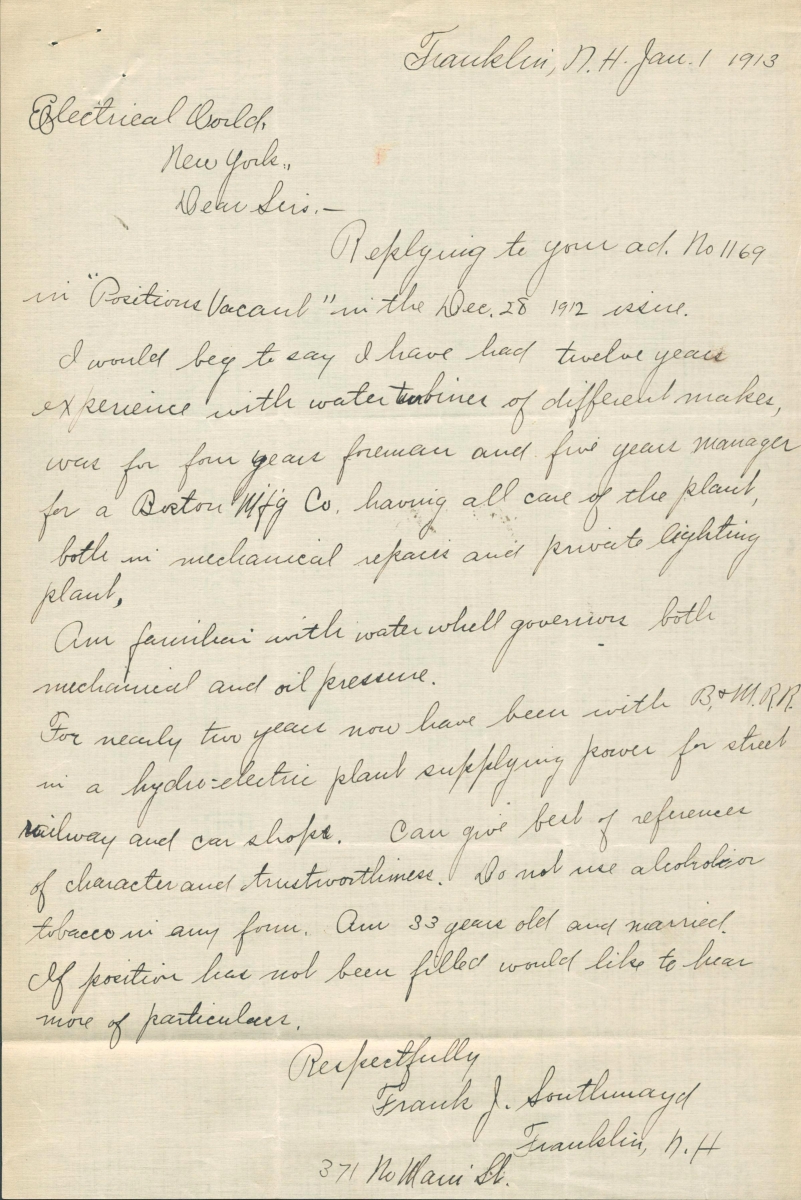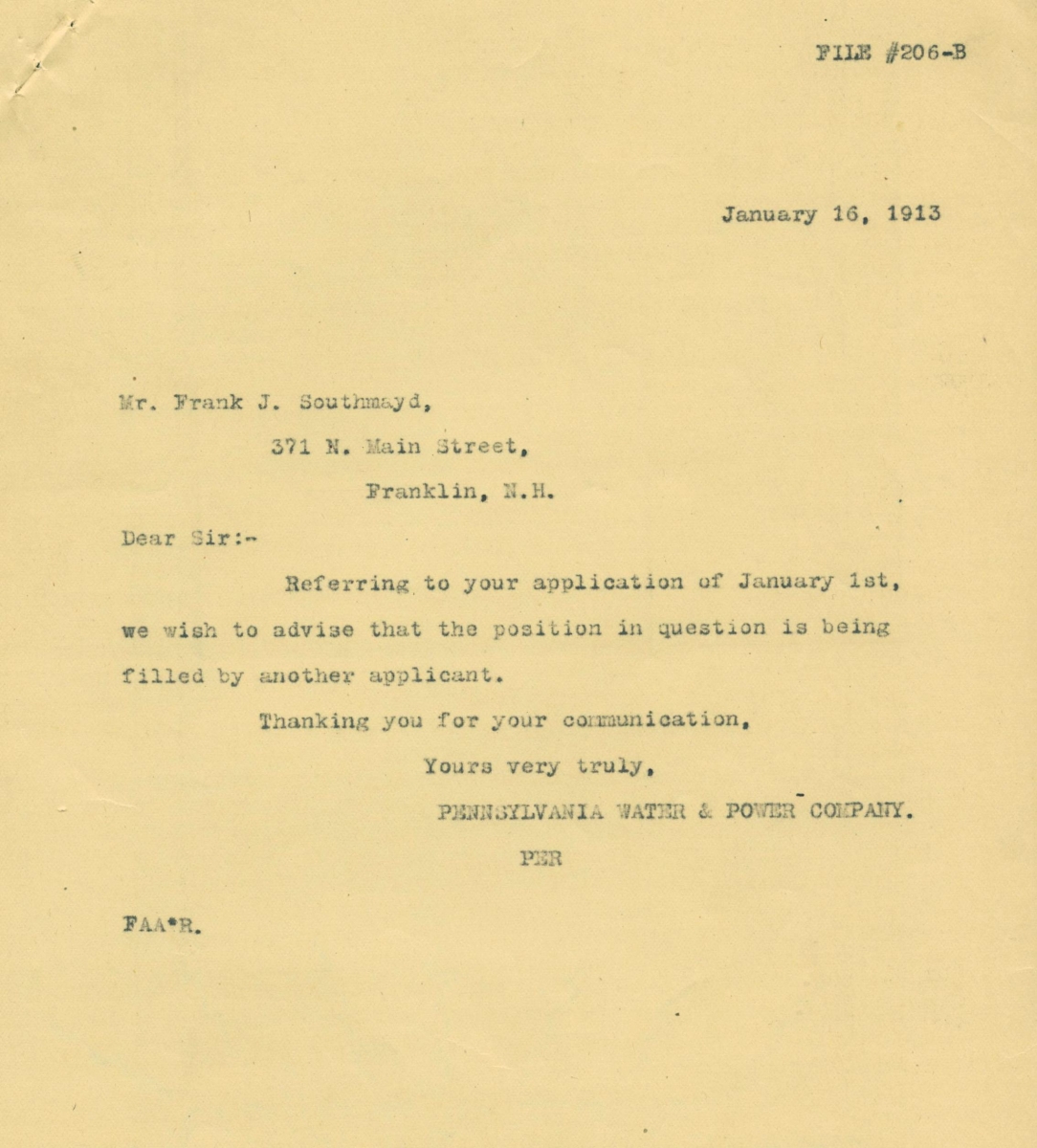
For new college graduates who spend hours upon hours applying for jobs, or for those who have done so in the past, we all know that the process can be tedious and, at times, incredibly frustrating. However, delve into the newly acquired records of the Pennsylvania Power & Light Co., and you will find that those looking for work in the early twentieth century often experienced the same frustration, success, or rejection.
Pennsylvania Power & Light Co. (PPL) developed out of the consolidation of numerous utilities companies in 1920. Such companies included small-scale electric lighting and power firms in eastern Pennsylvania, including the McCall’s Ferry Power Co. and the Harwood Electric Co., both of which eventually merged under PPL. The near exponential growth of Pennsylvania’s industrial economy demanded more power, and managers of the state’s anthracite coal mines, steel mills, oil refineries, and cement plants sought electrification to reduce labor and overall operating costs. As a result, new hydroelectric power plants emerged along Pennsylvania’s major waterways after the turn of the twentieth century. With them came the need for competent electrical and mechanical engineers, as well as basic labor.
In 1905, McCall’s Ferry Power Company began construction on the Holtwood Dam, a fifty-five foot tall structure that spans nearly a half a mile across the Susquehanna River. After the company defaulted on its bonds in 1907, the Pennsylvania Water & Power Co. formed to finish the dam’s construction, which began operations in 1910. In the following years, the company received numerous applications regarding vacant positions at the facility, most of which are included in the collection.
One of particular interest came from Frank J. Southmayd of Franklin, New Hampshire, who replied to an ad for a vacant position at the dam on January 1, 1913.
The application (right) consisted of a one-page, handwritten letter that detailed his skills in the field. He wrote, “I would beg to say I have had twelve years experience with water turbines of different makes,” and was “familiar with water wheel governors both mechanized and oil pressure.”
Previously, Southmayd noted that he had spent two years in a hydroelectric plant that supplied power for street railways and car shops. Perhaps most intriguing was the inclusion of his personal information: “Can give best of references of character and trustworthiness. Do not use alcohol or tobacco in any form. Am 33 years old and married.”
Most applications included details of marital status, something that companies took into strong consideration when hiring because it reflected commitment to both work and family. Unfortunately for Southmayd, he received a response from the company two weeks later stating that the position was being filled by another applicant.

Rejection letter sent to Southmayd from Pennsylvania Water & Power two weeks later.
Along with numerous employee applications, the collection is rich in correspondence relating to PPL officials, business deals, plant construction, subsidiary companies, and much more. For more information on when the collection will be available, please contact askhagley@hagley.org.
Clayton Ruminski is Archives Specialist in the Manuscript and Archives Department at Hagley Library
